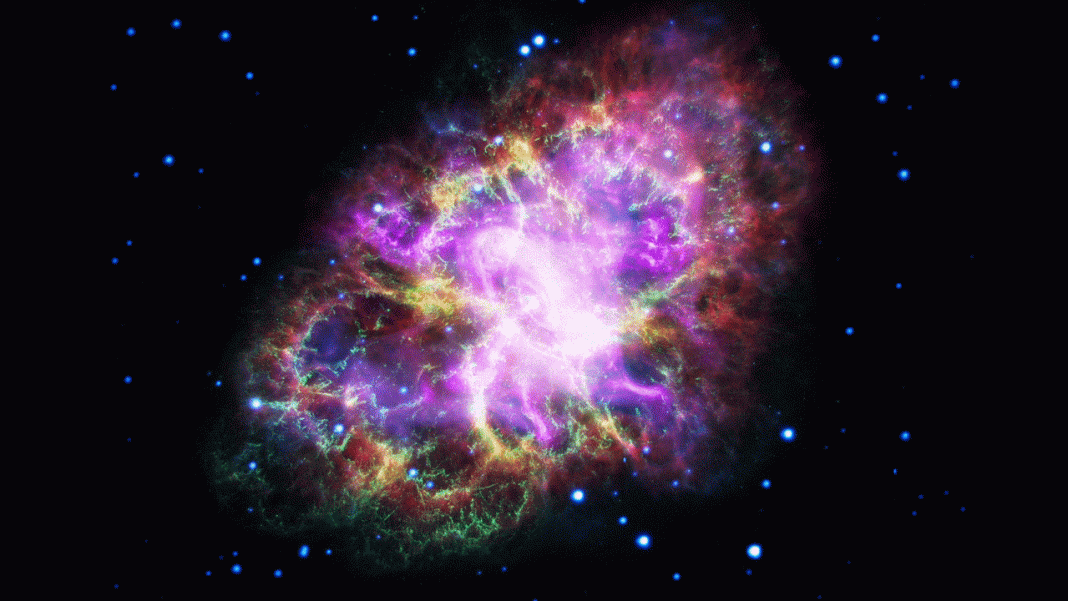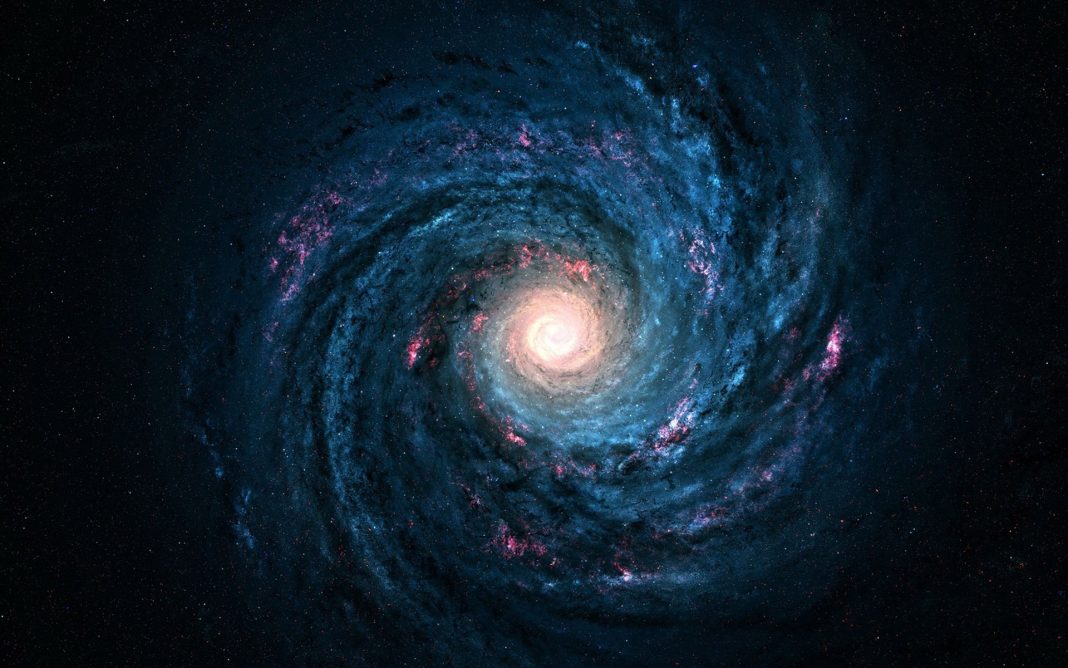A highly detailed image of the Crab Nebula has been produced by astronomers using data from a combination of telescopes. The data itself spanned nearly the whole breadth of the electromagnetic spectrum and included radio waves observed by the Karl G. Jansky Very Large Array (VLA), the glow seen by Chandra X-ray Observatory, the crisp view from the Hubble Space Telescope, and the infrared view from the Spitzer Space Telescope.
The Crab Nebula has formed back in 1054 ad the result of a bright supernova explosion. It was seen by Chinese and other astronomers originally and is located 6,500 light-years from Earth. A super-dense neutron star lies at the very center of the Crab Nebula, which rotates every 33 milliseconds. As it does it shoots out beams of radio waves and light in the form of a pulsar. A pulsar is essentially a highly magnetized neutron star or white dwarf. The shape of the nebula is formed by the interplay of the pulsar, a wave of fast-moving particles coming from the pulsar, and materially that was originally given off by the supernova explosion.
Scientists used observations from the telescopes that were all taken in November 2012 then analyzed in order to gain new insights into the Crab Nebula. “Comparing these new images, made at different wavelengths, is providing us with a wealth of new detail about the Crab Nebula,” said Gloria Dubner of the Institute of Astronomy and Physics (IAFE). “Though the Crab has been studied extensively for years, we still have much to learn about it”, she added.
More News to Read











